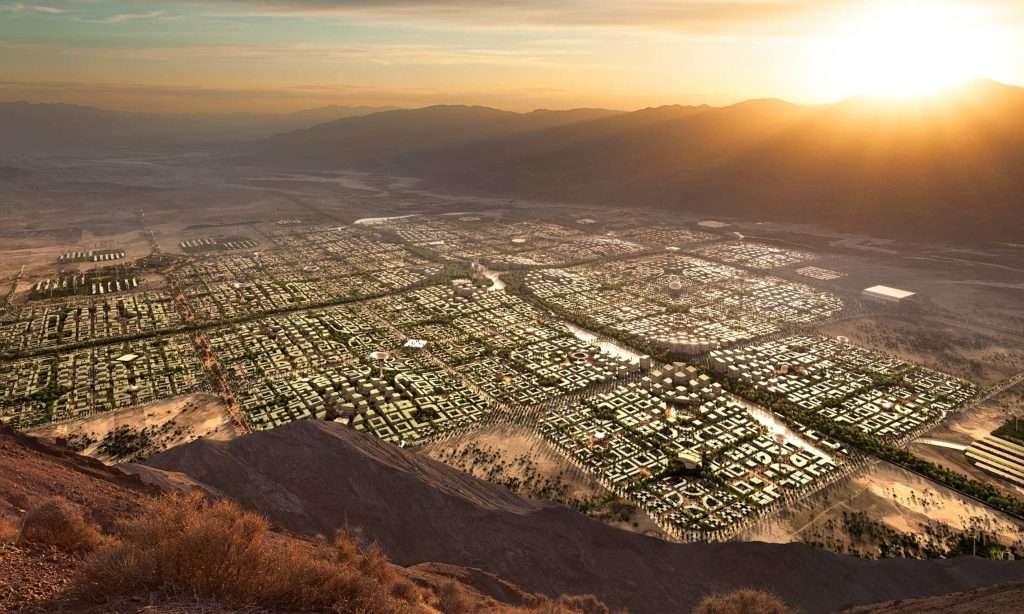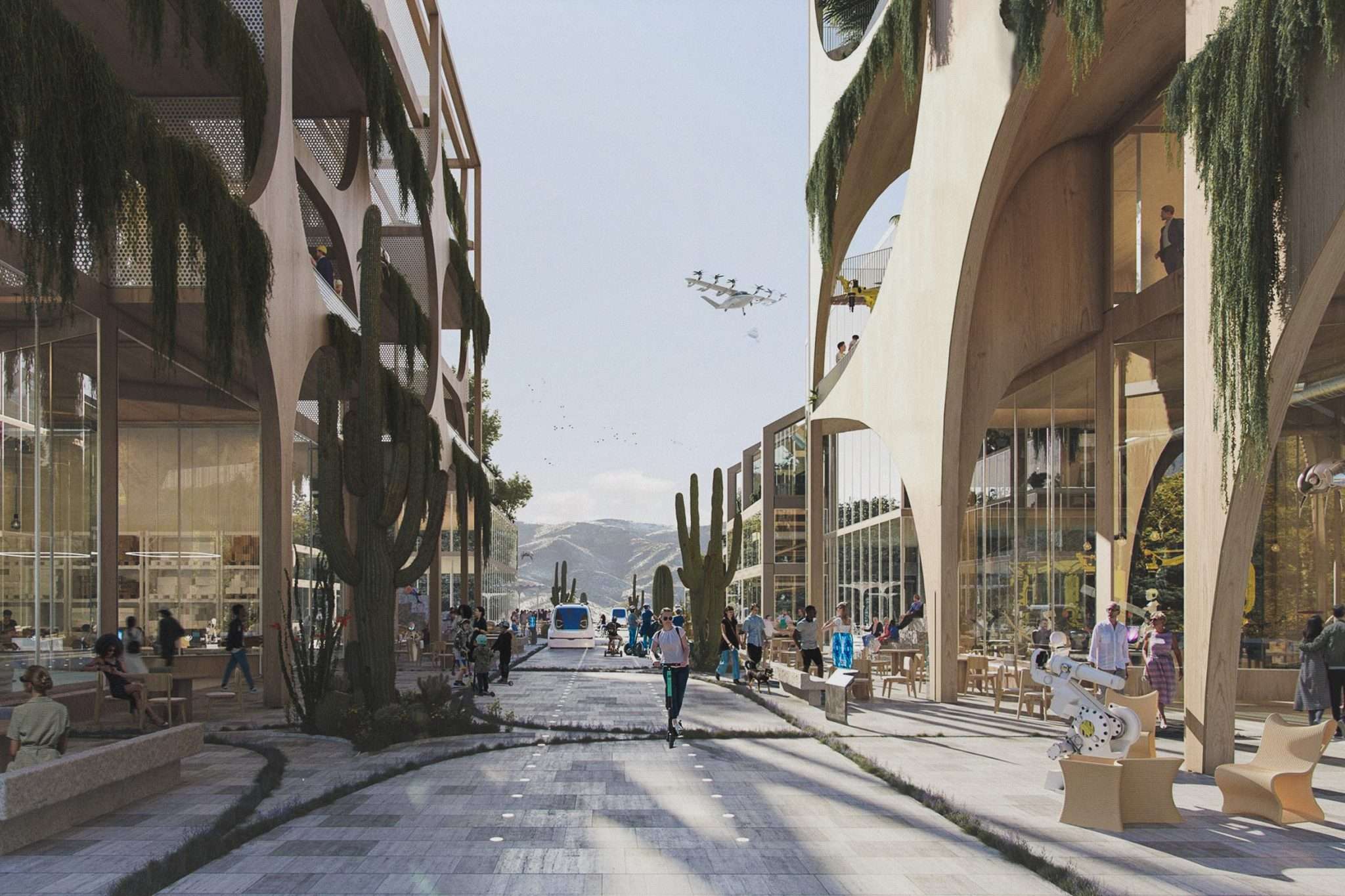Not to be confused with Elon Musk’s Tesla, or perhaps, to be precisely conflated with it, comes a new concept in sustainable living, a city called Telosa.
Like the token vehicle nodding us toward the a-sustainable-future-is-possible ethos, the new city concept from entrepreneur Marc Lore promises a pollution-free, renewable-powered town with a new model for land ownership.
The concept, developed by the founder of e-commerce sites Diapers.com and Jet.com (which Walmart acquired for $3.3 billion in 2016), would be located somewhere in an undeveloped area of the U.S., and begin housing residents by the end of the decade.
Lore is not the first to dream up a sustainable city, but he’s putting the wheels in motion to be the first to make it a reality.
Utopia but not Utopian
“Most civilizations in history at some point fall, right?” Lore told Bloomberg Businessweek. He says the wealth gap in the country is crippling. “This is going to bring down America.”
The billionaire says he had an aha moment after reading Progress and Poverty a few years ago. Written in 1879 by the economist and journalist Henry George, the book makes the case against private land ownership. He claimed society and capitalism lead to unequal worth that brings about an imbalance.

“If you went into the desert where the land was worth nothing, or very little, and you created a foundation that owned the land, and people moved there and tax dollars built infrastructure and we built one of the greatest cities in the world, the foundation could be worth a trillion dollars,” Lore says. “And if the foundation’s mission was to take the appreciation of the land and give it back to the citizens in the form of medicine, education, affordable housing, social services: Wow, that’s it!”
A new global standard of urban living
For Lore, the vision is to create a new city aimed at setting “a global standard for urban living,” by expanding human potential and serving as a blueprint for future generations.” This is a concept he’s been batting around since he was with Walmart.
Don’t be quick to call it a commune, though. Lore says this isn’t a hippie utopia; the idyllic town is rooted in new concepts, namely something dubbed ‘Equitism” that would make the land acquired for the city a community endowment.

“Capitalism has been an incredible economic model, but there are significant flaws, especially around income and wealth inequality,” Lore said in a statement. “Many of these flaws are a result of the land ownership model that America was built on. There’s a finite amount of land and that land was claimed generations ago—communities were created, tax dollars were used to invest in the land, and therefore the land increased in value over time with landowners not having to produce anything or take any risk.”
What would Telosa look like?
Still only a concept, Telosa was designed by Lore with help from the Danish firm, the Bjarke Ingels Group—which is at the forefront of sustainable design.
Locations in the running for the development include Nevada, Utah, Idaho, Arizona, Texas, and the Appalachian Region. According to Lore, his concept would include a more democratized land management system that would distribute resources to city services including education, healthcare, and energy—all without raising taxes.
The city is estimated to cost $25 billion initially, covering a 1,500-acre site. At that size, it could house 50,000 residents, but the goal would be to grow into a major metropolitan city about the size of Los Angeles at an estimated cost of $400 billion over the next several decades.

Lore’s vision is both green and tech-heavy with lots of farms and buildings covered in plants. The city’s sci-fi buildings, including a landmark Equitism tower, would incorporate energy efficient designs, solar panels, and rainwater collection.
“Just imagine what’s possible.”
Marc lore
Walking would be the recommended transportation mode as would biking and slow-moving cars and rails. There’s even talk about air taxis.
“My focus turned to making Telosa the most sustainable city in the world,” Lore said. “From global warming to water and energy—how can we do better for future generations? And what technology and other innovations in policy and design can we embed in the city that is only possible because of the fact that we’re building it from scratch?”
For Lore, building the “most sustainable city in the world” isn’t a matter of if, but when.
“Just imagine what’s possible with sustainable building materials, autonomous vehicles, electric aircraft, and underground movement of materials.”
Ingels says the BIG’s Telosa design is also proof that “a sustainable human presence on planet Earth is attainable with existing technologies”.


